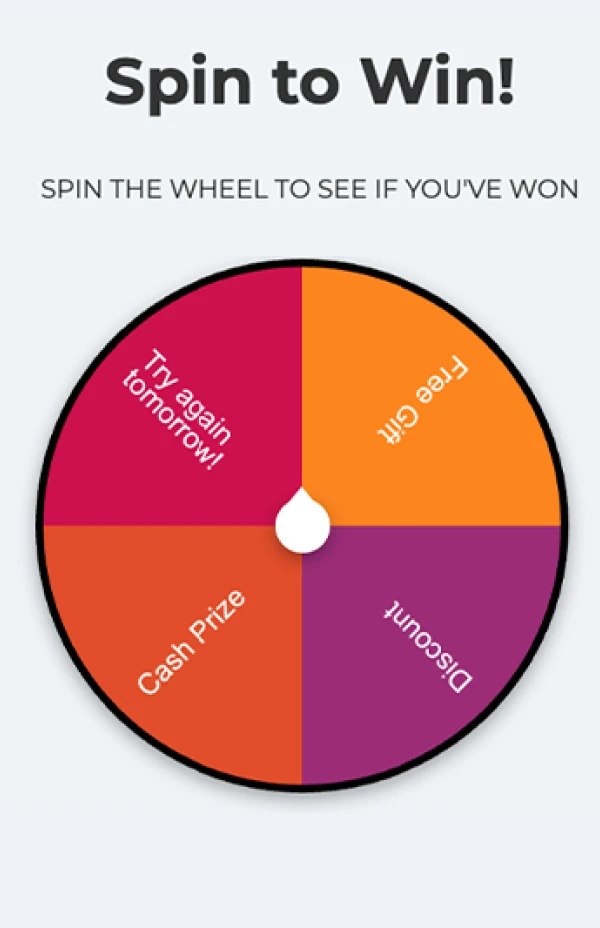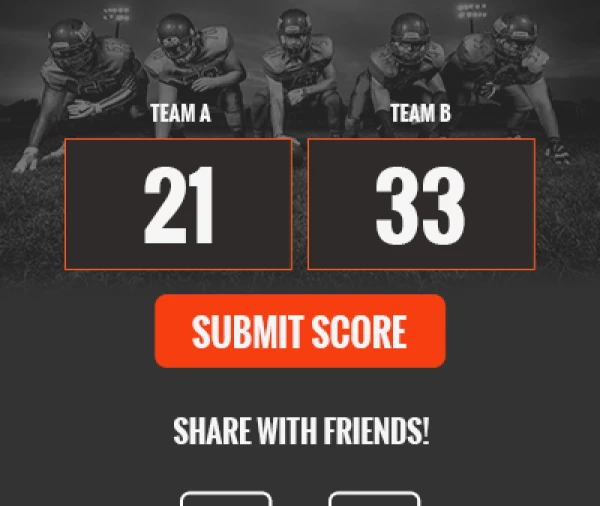In any type of contest, with prizes ranging from a $50 gift card to a brand new SUV, there is one universal truth: participants should feel excited at the prospect of winning. But when contest fraud is suspected, that excitement can quickly turn into feelings of resentment and frustration. Whether your contest’s goal is to help fill a sales funnel, build brand awareness, or just get a bit of engagement, these sentiments can ultimately do more harm than good. For your next contest or giveaway, take some of these fraud prevention strategies to heart - both for collecting entries and votes. Putting a few smaller measures in place on the forefront can go a long way in saving you time, headache, and even from losing customers.
How to Prevent Entry Fraud
If you’re restricting the number of times a participant can submit an entry, whether it be once per day, one time total, or anything in between, make sure those restrictions are adhered to with these simple strategies.
Notify the winner by email
Let it be known that the winning participant will only know they’ve won via their valid email account. This best practice will go a long way in ensuring all email addresses submitted in your entry form are from an email address owned and monitored by a real human.

This method isn’t 100% fraud-proof in ensuring every participant only submits one entry. We all have a few email addresses we use for different purposes, but you’ll rarely find a person juggling hundreds or even dozens of email accounts that would allow them to gain a significant advantage. This also isn’t to say that you can’t announce who the winner is on your website or social media - just do it after you have notified the actual winner via email.
Require a photo of a valid ID
If you’re running a giveaway for a high-stakes prize, requiring a photo of a participant’s ID is not out of the question. In fact, if you have strict eligibility requirements, this is a great way to ensure that your winner is who they say they are. If asking for an ID is something you’d like to implement, make sure you use contest software that makes it easy for participants to upload an image in an entry form. Storing the image files in a database should be a feature included as well.
How to Prevent Voter Fraud
Block like IP addresses
Contest software, like ShortStack, allows you to enable a type of voting restriction that looks at the IP address of every voter. If that IP address has already been recorded with a vote, the voter behind the duplicate IP will be blocked from casting a second vote.The one drawback to blocking like-IPs is that it prevents those within the same network from voting. For example, if one member of a household casts a vote, other members of that same household may be blocked from voting. The same goes for co-workers in an office.If blocking like-IPs sounds like it may cause you more harm than good, there’s another fraud prevention method that may work better for your contest or giveaway. This other form of IP blocking looks at a voter’s browser information as well as the IP address to identify individual voters, even if they have the same IP as someone else. ShortStack refers to this type of restriction as an Anonymous Fingerprint. It’s not quite as secure as blocking a duplicate IP address, but it will be less likely to block legitimate participants.
Verify the email address
When a vote is cast, display a field to capture an email address. When the form is successfully submitted, the voter will receive an email in which they’ll verify their email address. Only when the email is verified will their vote be cast.This may seem a little complex to collect a simple vote, but it can go a long way to prevent fraud, especially when the stakes of your contest are high.

Choose a winner using more than a vote tally
The fact is, no matter how sophisticated contest software can get at preventing fraudulent votes, contest cheaters will always be looking for ways to beat the system. For this reason, consider incorporating another means of winner selection into your process. For example, use voting to get your entries narrowed down to a list of 5-10 finalists and then use a panel of judges to choose the final winner.
Best practices for any contest or giveaway
Include some rules or terms and conditions
You’d be amazed at how many businesses skip this important step. I understand the temptation since legal stuff can be scary and expensive. But you don’t have to hire an attorney to write up a few terms and conditions to help protect you if something in your contest goes awry. Start with a template, like this one. You can stick to the boilerplate verbiage provided here to make sure the important legal bases are covered.
Use a reCaptcha
Bots get a bad rap. They’re great for executing simple, repetitive tasks at a much faster rate than humans ever could. We can credit them for helping make search engine results and social media feeds so perfectly suited to our preferences. But because bots are so amazing at these types of tasks, their usefulness can also be used for evil, such as cheating in online contests at the behest of ill-intentioned individuals.The good news is that implementing a reCaptcha can offer a simple way for us humans to detect bots and keep them from entering our contests. With good contest software, you’ll be able to enable a reCaptcha and even set the sensitivity, so you don’t end up blocking entries or votes from real people.
In summary
Preventing fraud in your contest or giveaway may be a never-ending battle. Just as fast as contest software builders are thinking of new and better ways to block spammy entries and fake votes, cheaters are thinking of new ways to cheat. But, don’t give up!Combine your contest software’s fraud prevention features with best practices such as using a panel of judges to select a winner as well as some well thought-out terms and conditions. Together, these methods will give you your best chance to beat the cheat.
Create your first contest now
Sign up for our free trial today. No commitments, cancel anytime.
About the author
Jessica Miller-McNatt has been with ShortStack for over a decade and has served in every role from Marketing Team Lead to Customer Success. Her journey in martech continues to fuel her fascination for what drives growth. Jessica's favorite weekends are spent in the North Georgia mountains, chasing waterfalls and exploring with her family.
Recent posts
Go back to blogGet marketing tips straight to your inbox
Launch an irresistible giveaway. Get started for free.
Join 630.000+ marketers that are boosting engagement and sales.













